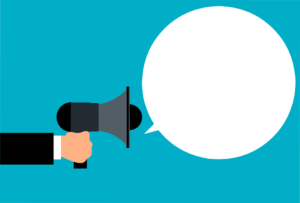Keynote Speaking
A Keynote speaker’s role is to set the “Keynote” for the conference or event establishing the basic tone and tenor of the gathering. The difference between other speakers & keynote speaker is that the other speakers add overtones and themes but a keynote speaker gives the defining presentation of a conference and tunes the audience. Some keynote speakers are professionals who do nothing but speak and the best of them feel comfortable and confident on stage, presenting inspiring stories or ideas within the context of the event to get the attention of the audience.
Keynote speakers have to prepare something called Keynote which is a principal speech that introduces an event. A keynote speech sets the frame, tone and tenure of the event by introducing a big idea or something. The best keynote speeches should be inspiring and cover the purpose of an event. Keynote speech needs to guide their audience and move them through their speaking. For a keynote speaker, it’s not enough to just tell a funny anecdote, the speech is supposed to be rich. Keynote speeches are all motivational, they don’t have to necessarily start an event but can set the stage for the next upcoming speakers and discussions.

Tips for delivering a keynote speech.
Of course, there is no perfect recipe or set of guidelines as to how to write a keynote speech but it’s pretty similar to writing a book.
1.Find out what “keynote” means in context to the situation
Speaker needs to acknowledge keynote can be referred to as many different things, one needs to get clarity whether the keynote is the main presentation or just a part of it
2.Learn the intent of your keynote
Know the goal or context about the event, is it to inform, entertain or shock. The speech should have an emphasis on one. The event organizer will have a vision in mind but its the speaker’s responsibility to understand and make the speech.
3.Understand your audience
Understand your audience, what can move them with your speech, how to connect with them, what their expectations are. A good keynote speaker tells a story that’s directly related to the goals of the event
Some audience research ideas:
- Google the conference name and look for reviews or blog articles
- Look at conference hashtags on Twitter and Instagram to see who attended last year and what they said/shared
- Ask the organizer for audience reviews/feedback from past sessions/keynotes
- Ask your social media followers or email subscribers if they’re attending and what they expect
4.Do your Research
Research is important for keynote speakers to understand what worked out well and what didn’t in the previous events, reinventing is not necessary, learn from the previous, do thorough research on the event websites to collect data and make a speech that could move the audience
5.Plan your story
Storytelling is the best to reach your audience, it can be personal, trending in news, surprising. Whatever it is, it should have at least one of these attributes: funny, entertaining, inspiring, gripping, or moving – or a combination – as long as it makes sense and grabs the audience’s attention.
TIP: How long should a keynote speech be?
Keynotes rarely reach 60 minutes in length. The more common length is between 15 and 45 minutes (exceptions apply).

6.Internalize your presentation
As a speaker it is not good to do or wait for last-minute preparation, finish the presentation a couple of weeks ahead of the event so one can internalize it. Keynotes have higher requirements, the quality so one should refine, prepare and learn the content to be perfect during the keynote delivering
7.Connect with the audience at the event
Connecting with the audience during breaks is a good opportunity to know them. Later on, it can help you with the speech when you stand in front of a mass and can address or talk to them, this can personalize your speech and make you feel more comfortable on stage and make the presentation smoother.
8.Use social media to solidify the connections you made
Well, one should never forget its audience, reconnect with your audience after the event either through social media or in person. Make yourself available to answer questions and discussions with your audience. That increases the chance of better feedback/reviews, creates advocates and new followers, and allows you to connect deeply with the people who gave their time and attention listening to you.
- Avoid only text as much as possible
- Work with simple charts
- Cover no more than one idea per slide
- Back your claims up with data
- Practice your deck – a lot
Other tips to keep in mind while preparing a keynote speech
- Sketch out your story, be thorough with your research and facts and sort the information you need for your keynote speech
- Use strong images for your slides
- Avoid Text
- Keep the speech simple
- Back up your speech with data
- Practice a lot.
- keep in mind formatting, timing design can make a difference in how you present your keynote to your audience. Find the right solution first so you aren’t scrambling last minute.
Keynote’s speech should be original and unique. As a keynote speaker collect interesting facts and make a story that draws the audience’s attention and most importantly practice, practice, practice.
A keynote speaker should leave the audience energized, motivated and engaged, they should leave a mark as a keynote speaker.

There are 4 types of keynote speakers
INSPIRATIONAL KEYNOTE SPEAKERS
Inspirational keynote speakers make it a lot easier for their audience to find inspiration, Words should be compelling and one should have the power to move the audience. The inspirational keynote speaker should know how to build their audience up, what stories and words could help them grasp hope. Inspiration the audience finds comes from o life experience, great storytelling and motivational message
FUNNY KEYNOTE SPEAKERS
Well, laughter is the best medicine and the worst of worst moods are cured with some laughs. Funny keynote speakers make their audience laugh and give out a strong message. They lift their spirits through humour. When the audience is stressed the best solution is to make them laugh, That will keep your audience engaged and boredom.
INDUSTRY EXPERT KEYNOTE SPEAKERS
Industry keynote speakers are professional speakers who have extensive knowledge about a particular industry. They share their knowledge with their audience through speaking. One can be an expert on specific topics or a range of issues. They should make sure to deliver engaging information to their audience. Industrial keynote speaker keeps their audience updated with constant changes happening around in the industry.
CELEBRITY KEYNOTE SPEAKERS
Celebrity keynote speakers play a significant role in making your event outstanding, they draw attention, attract delegates, impress their audience. They boost the event and can increase attention and attendance which is good for social media appeal.

12 best keynote speaker strategy

THOMAS SMALE
Play It Safe But Be Yourself
“For your first keynote, it is tempting to try something different and unique to stand out. If you have not done much speaking before, it is much better to put together a polished presentation that reflects your knowledge and expertise. Talking about something you don’t know much about is a recipe for disaster. Another tip: to avoid PC/Mac compatibility issues, convert your presentation to a PDF.
Trustify
Go Off Script
“Common thought practice is to prepare your words or speech ahead of time. I find this to sound inauthentic and too rehearsed when I choose speakers for conferences or am a speaker myself. Having bullets to work off of but keeping your talk natural and off-the-cuff, while still staying on message, is the best way to capture an audience.
Use the Power of Visualization
“Use the power of visualization to prepare for your first panel or keynote. Visualize the whole process. Start with taking a seat or hitting the podium. Then look at the audience. Then see yourself speaking slowly and hear your voice leaving the speakers. Pay attention to how you feel. If your heart beats faster, practice taking deep breaths. You’ll mirror that habit when you do it live.
Get Speaker Training
“Take a seminar, a course or meet with a speaking coach who can identify the areas where you may need the most improvement. This is also a great way to get outside feedback and specific solutions to fix those areas of weakness. It can be scary getting up in front of so many people, so this training can help you get over those nerves.
Know Your Material
“I advise first-time speakers to rehearse exhaustively. They should know the material forwards and backward. The goal is not to mechanically reproduce the presentation, but for the topic and data to be second nature. That way they can focus on relaxing, speaking well, and forming a connection with their audience — not racking their brains or burying their head in the notes.”
VocaWorks
Prepare for Questions
“A good speaker should always allow time for questions from their audience, as a good speech always leaves listeners wanting more or wanting involvement. However, it is good practice to prepare for any questions that might be thrown your way ahead of time. Practice your speech in front of friends and colleagues and see what questions they come up with so that you leave your listeners fulfilled.
Loganix
Don’t Try to Be the Kind of Speaker You Aren’t
“Nothing is scarier than public speaking to a lot of people. “Be yourself” may sound like lame advice, but (for example) if you’re not a naturally funny person, you should not try to adopt that as a speaking persona. Choose a style that matches how you’re already comfortable communicating, and then master the delivery by researching and watching other people who share that kind of identity.”
Know Your Capabilities
“Keynotes are all about making an impression. Make sure you accentuate your strengths, especially for your first run at the big stage. If you’re more comfortable and can be more natural with a more scripted approach, then take that and learn from the experience. When it comes to panels, stay focused on the questions and your fellow panelist. It helps you to be more natural drawing the audience in.
JEFF JAHN
Focus on Storytelling
“Standing in front of a crowd as a keynote speaker can be hugely intimidating, but the anxiety level melts away as soon as you gain a rapport with the audience. To do this, focus on relatable stories that you know by heart, and make sure to get the audience comfortable early with something humorous that ties well into the story. If they smile, they will remember you
Don’t Read Ahead
“Whatever you do, don’t read a speech and don’t read your slides. You were likely asked to be a speaker because you have deep passion and insights into a subject that people want to hear. Try to let that natural enthusiasm shine through. Nobody will notice if you missed a point you were trying to make or stumbled for a moment.”
Teach in a Logical, Progressive Way
“A great speech lets your audience members leave with actionable tools they can immediately implement in their businesses or lives. This means taking a logical approach to teaching, such as, “Today, I’ll cover 10 tips for…” Use research and statistics to support your slides and don’t put too much content on each slide (or the audience will read instead of listening.)
TokenPay
Make Them Remember You
“Do whatever it takes to make sure the audience remembers you. I noticed that the successful keynotes were the ones that were comfortable in their presentation. Make funny jokes that the audience could relate to, engage the audience, walk around the room, speak loudly and clearly. I know I had a successful panel or keynote when I didn’t see anyone looking at their cell phone while I was speaking.


